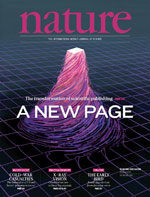I commented on the article “Open access for the people” by Stephen Curry in The Guardian, March 20, 2012.
———-
thanks, excellent article. I agree that intelligibility & translation for many audiences might usefully be considered part of “open access” in a broad sense. Personally, I’m especially interested in ways to do this through social media, possibly supported by algorithmic, crowdsourced, or peersourced summaries & extractions.
I’d like though to suggest a slightly broader context to the basic premise:
“Open access publishing is making the research literature freely available to the public….the primary function of the research literature is to facilitate and formalise the exchange of information between experts in a particular field.”
I’d suggest this notion of “research” is perhaps an unduly particular notion of scholarship, associated with contemporary science. In that context, yes, publication may be indeed primarily directed at the small group of people who may be able/interested to specifically reproduce, build on, or evaluate the research result.
On the other hand, as you note, publication spreads research across boundaries. Scientific journals have always been in part about sharing results to a broader field — from their origin in the Philosophical Transactions of the Royal Society in 1665, to the most prestigious journals today such as Nature, Science, and Cell. In many fields now, exchange with experts in your particular field may be more likely occurring through more informal mechanisms than journals, such as preprint or data repositories, blogs, or mailing lists; and formal publication mainly a public, archival record.
Instead of “research” I think in some ways “scholarship” may be a more historically accurate and inclusive term, especially from the standpoint of non-scientific fields. In the words of the foundational Budapest Open Access Initiative declaration of 2002,
“The literature that should be freely accessible online is that which scholars give to the world without expectation of payment.”
This “literature” is not limited to science, or to journal/article content, and might well include “public scholarship” of various forms for various publics. Many social scientists and humanities scholars may and arguably should see broad publics as the audiences for their work, and there are not necessarily any insurmountable barriers of vocabulary or method or context required for broad audiences to engage with the work, unlike with most research science.
In my opinion, the use of the term “research” across all disciplines suggests a certain hegemony of scientific peer-review literature as the model and ideal of scholarship, one which posits specialists rather than publics as the audience. I believe fields outside of natural science, particularly, should question this model, and look to reclaim their rich history of — and greater potential for — broad public engagement.
—-
Tim McCormick
Co-founder, Open Library of Humanities
@tmccormick / https://tjm.org / Palo Alto, CA, USA
 Nature magazine published a special issue “The future of publishing: a new page” 27 March 2013. The next day, Cameron Neylon published a Comment, “Let’s get this straight: Open-access terminology needs to be employed accurately“), in Times Higher Education.
Nature magazine published a special issue “The future of publishing: a new page” 27 March 2013. The next day, Cameron Neylon published a Comment, “Let’s get this straight: Open-access terminology needs to be employed accurately“), in Times Higher Education.
